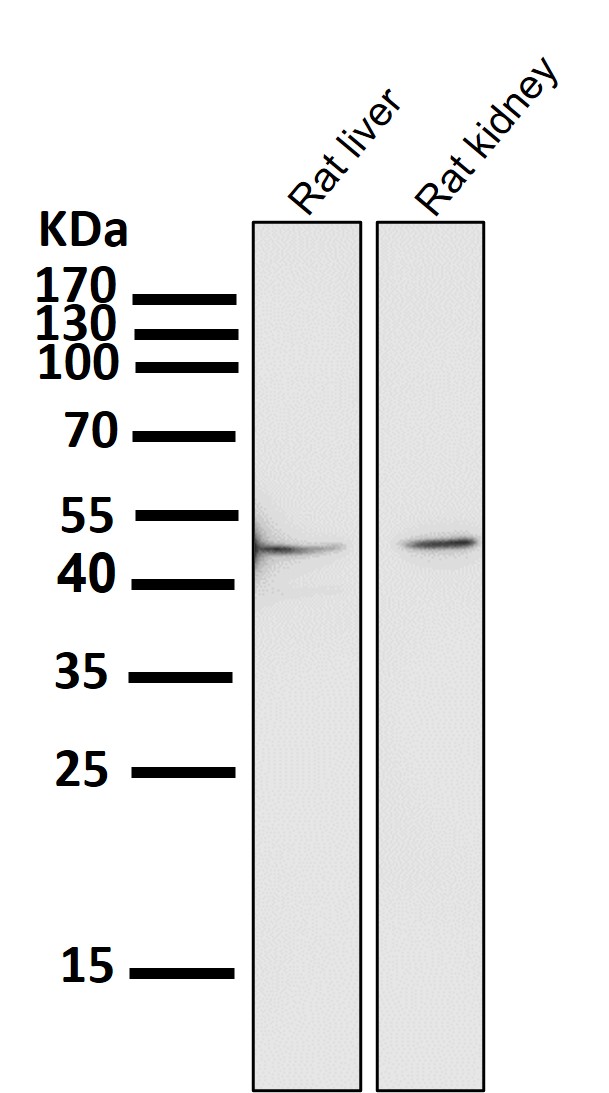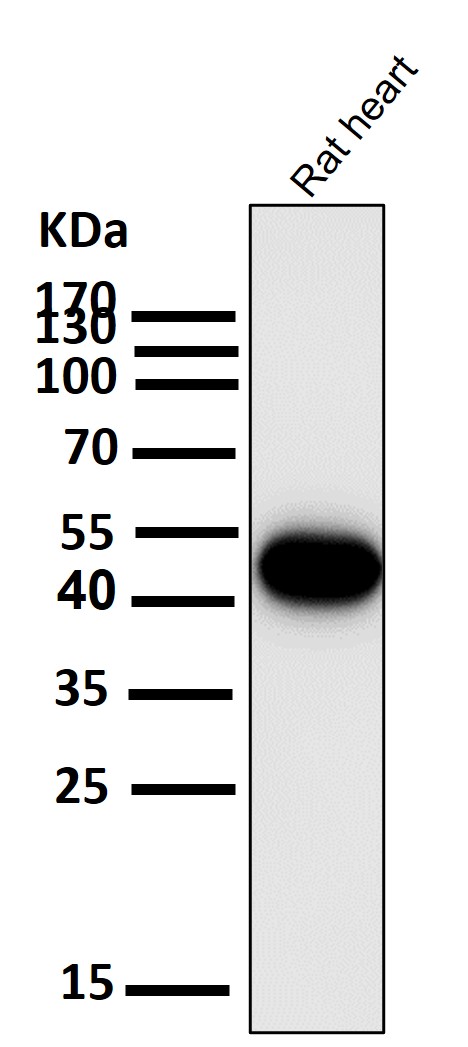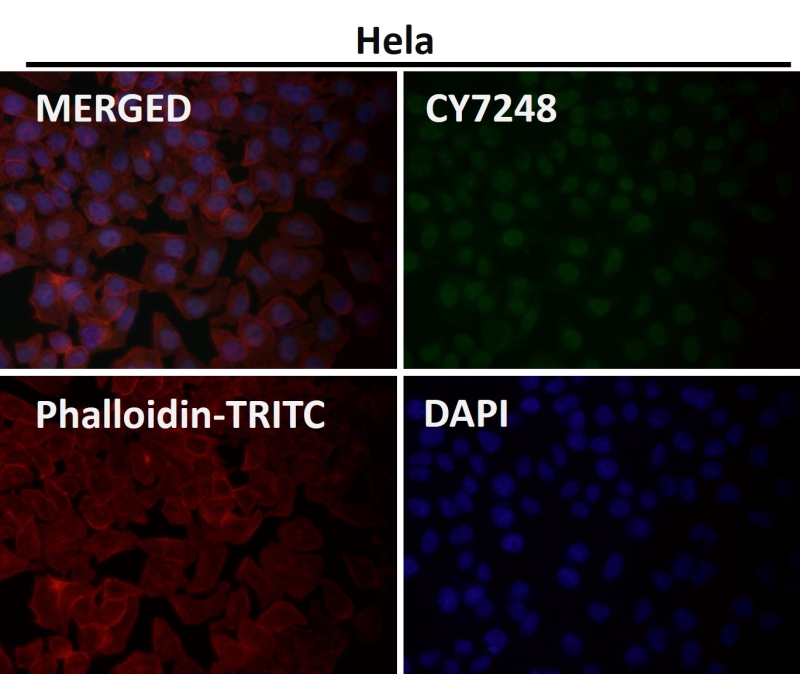



| WB | 咨询技术 | Human,Mouse,Rat |
| IF | 咨询技术 | Human,Mouse,Rat |
| IHC | IHC:1/100-1/200;IHF:1/50-1/200 | Human,Mouse,Rat |
| ICC | 1/50-1/200 | Human,Mouse,Rat |
| FCM | 1/20-1/100 | Human,Mouse,Rat |
| Elisa | 咨询技术 | Human,Mouse,Rat |
| Aliases | TRM82; WD repeat protein 4; wdr4;;WDR4 |
| WB Predicted band size | 45 kDa |
| Host/Isotype | Rabbit IgG |
| Antibody Type | Primary antibody |
| Storage | Store at 4°C short term. Aliquot and store at -20°C long term. Avoid freeze/thaw cycles. |
| Species Reactivity | Human |
| Immunogen | A synthesized peptide derived from human WDR4 |
| Formulation | Purified antibody in PBS with 0.05% sodium azide,0.05% BSA and 50% glycerol. |
+ +
以下是关于WDR4抗体的3篇参考文献示例(文献信息为示例性内容,实际需根据具体文献调整):
1. **文献名称**: *WDR4-mediated tRNA m7G methylation promotes proliferation and metastasis of hepatocellular carcinoma*
**作者**: Li X, et al.
**摘要**: 该研究利用WDR4抗体通过Western blot和免疫组化技术,发现WDR4在肝癌组织中高表达,并通过调控tRNA m7G修饰促进肿瘤细胞增殖和转移。
2. **文献名称**: *The role of WDR4 in maintaining genome stability through regulation of tRNA modification*
**作者**: Wang Y, et al.
**摘要**: 研究使用WDR4抗体进行免疫沉淀实验,揭示WDR4通过与METTL1复合体相互作用参与tRNA m7G甲基化,缺失WDR4会导致DNA损伤应答异常和基因组不稳定。
3. **文献名称**: *Antibody-based profiling of WDR4 expression in human cancers*
**作者**: Chen H, et al.
**摘要**: 该文献开发了一种高特异性WDR4抗体,通过组织芯片分析发现WDR4在乳腺癌、结直肠癌等多种癌症中过表达,且与患者预后不良相关。
(注:以上文献为模拟示例,实际引用时需查阅真实发表的论文并核对信息。)
The WDR4 antibody is a crucial tool for studying the WD repeat domain 4 (WDR4) protein, a member of the evolutionarily conserved WD40-repeat protein family. WDR4. also known as TRM82 in yeast, plays a pivotal role in RNA modification processes. It forms a catalytic complex with METTL1 (methyltransferase-like 1) to mediate m7G (N7-methylguanosine) modification at position 46 of transfer RNA (tRNA), a conserved post-transcriptional alteration critical for tRNA stability, nuclear export, and translation fidelity. Structurally, WDR4 contains multiple WD40 repeats that facilitate protein-protein interactions and complex stabilization.
Research using WDR4 antibodies has revealed its involvement in diverse biological processes, including embryonic development, cell cycle regulation, and stem cell differentiation. Dysregulation of WDR4 is associated with human diseases, particularly cancers like hepatocellular carcinoma and glioblastoma, where its overexpression correlates with poor prognosis. The antibody enables detection of WDR4 expression patterns through techniques such as Western blotting, immunohistochemistry, and immunofluorescence, helping researchers map its subcellular localization and quantify expression changes under various conditions. Validated WDR4 antibodies typically demonstrate specificity through knockout cell line controls, ensuring reliability in experimental data. These studies contribute to understanding the molecular mechanisms linking tRNA modification to cellular homeostasis and disease pathogenesis, positioning WDR4 as a potential therapeutic target or diagnostic biomarker.
×